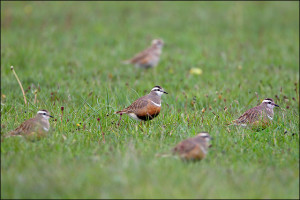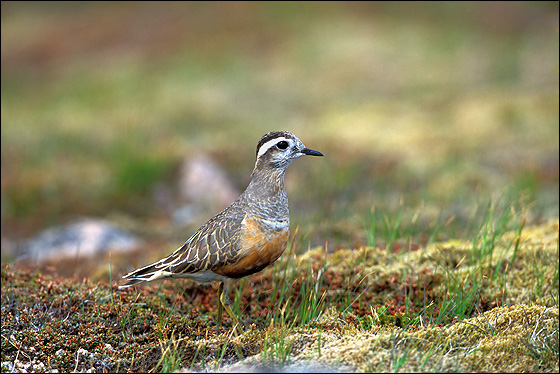Eurasian Dotterel (Charadrius morinellus)
From then on the male is responsible for all or most of the incubation of the eggs, and the brooding and tending of the chicks. It is a considerable investment of his time and so, during his brief association with the female as she is forming the eggs, he keeps her away from other males and copulates with zeal, protecting his paternity. The female, meanwhile, typically abandons him once the clutch is complete, and goes in search of another mate, although most probably fail to do acquire one, and remain monogamous.
There are variations on this theme. For example, the females often share some of the incubating duties for second or third clutches. And acquiring a second male after the first (“serial polyandry”) only works when there are plenty of males around. In some years females could outnumber males and, in a complete turnaround, these males may then pair with more than one female. On occasion they have been recorded incubating two clutches of eggs in the same nest.
All this takes place in Arctic or mountainous habitats, where it is cold, windswept and often misty. Dotterels are keen on open, flat terrain, often interspersed with rocks and boulders and with grass kept short by climate or grazing. Here they feed on insects and spiders, acquiring them in the usual plovers’ stop-start manner.
Dotterels are summer visitors to Europe, wintering on the steppes and plateaux of North Africa and the Middle East. They have a habit of migrating in short bursts, stopping off on traditional staging areas en route and often remaining on these for many days.


